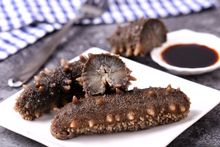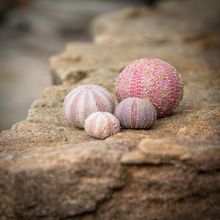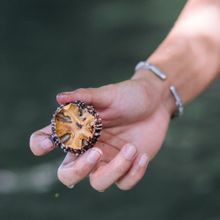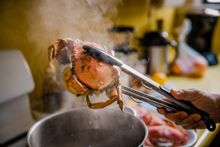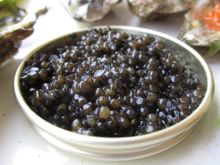 29 Apr 2020
29 Apr 2020
Tags: Russia, Travel to Russia, travel russia, discover Russia, Russian food, Russian Cuisine, Russian gastronomy, Eat Local, Russian Far East, local food, local experience, Seafood, Sea of Japan, King Crab, Kamchatka crab, gastronomic travel, gastronomic tourism, Gastronomic tour, Amparus, Amparus Tour Operator

Have you ever tasted monkfish sandwiches? Smelt shaurma? Cod fishburger? Why not treat your taste buds with delicious oysters of the Black Sea? If you're looking for a completely new gastronomic experience, Russia will be a perfect destination. Are you brave enough to taste a raw sea urchin or a scary-looking sea cucumber? Let's take a virtual gastronomic adventure!
- Sea urchin
You can find this delicacy on the Baltic Sea or the Sea of Japan (Russian Far East). Don't be misled by its sharp spikes: the flesh of sea urchins is tender and sweet, with a hint of iodine. The most precious part of a sea urchin is its roe: it is incredibly rich in vitamins, minerals, essential fat acids and other useful substances, and even considered as the elixir of life (these animals may live up to 200 years!). Sea urchin roe is one of the key ingredients in the Japanese cuisine, and is often used in the Russian Far East: Russian chefs use it for cooking tartare, seafood pasta and preparing condiments.
- Caviar
The roe of Russian sturgeon (also known as “diamond sturgeon”) is a true symbol of wealth and power of the Russian Empire. It was one of the most luxurious foods of the Russian royal cuisine. The traditional method of caviar production is complicated and very costly, so only a few Russian and foreign producers follow it today. More affordable alternatives are: pink salmon caviar, coregonus caviar, trout, halibut and coho salmon caviar.
- Japanese sea cucumber (“trepang”)
This gourmet delicacy is little known outside of the Far East. In Korea and China, it is most often eaten raw (and yes, it doesn't look very pretty), while in the Far East, it is usually cooked the same way as an octopus. Despite its creepy look, sea cucumber is a font of vitamins and minerals, and is widely used in Eastern medicine.
- Kamchatka crab
The red king crab, also known as Kamchatka or Alaskan king crab, ranks first among other crabs caught in the Russian Far East, deservedly so. These animals are huge – their leg span may reach 1.8 meters (5.9 feet) and the weight varies from 2.5 to 5 kilos! Kamchatka crab is a real treasure of the far-eastern cuisine. Its flesh is delicious: white, soft and a bit stringy. The edible parts of crabs are legs and pincers; they are usually boiled in salty water (15 minutes maximum, or the meat will be tough) and must be eaten fresh. The roe of Kamchatka crab is also used in local cuisine.
- Murmansk sea scallop
This beautiful sea mollusk is one of the most popular and sophisticated sea delicacies, due to its juicy and tender flesh. It can be eaten raw or cooked, combined with other products. According to many Russian chefs, it is a perfect high-quality ingredient for seafood specialities. Highly recommend you to taste!
- Magadan sea snail
This mollusk hides its precious protein-rich flesh in the elegant screw-shaped shell. Magadan sea snails live in cold water of northern seas and widely used in far-eastern cuisine. There are numerous recipes with this seafood: for example, a boiled sea snail with lemon, olive oil and vinegar; a sea snail fricassée with tomato sauce and potatoes… The list goes on and on.
- Cucumaria
This exotic animal is a genus of sea cucumbers. In Asian countries, such as Japan and China, it is fondly known as a “ginseng of the Sea of Japan”, and rightly so. It is a unique dietetic food which is valued for its only excellent taste and curative properties. In Russia, cucumaria is known mainly to Far Easterners. So, if you happen to visit Vladivostok one day, there's no way you don't try this delicacy!
